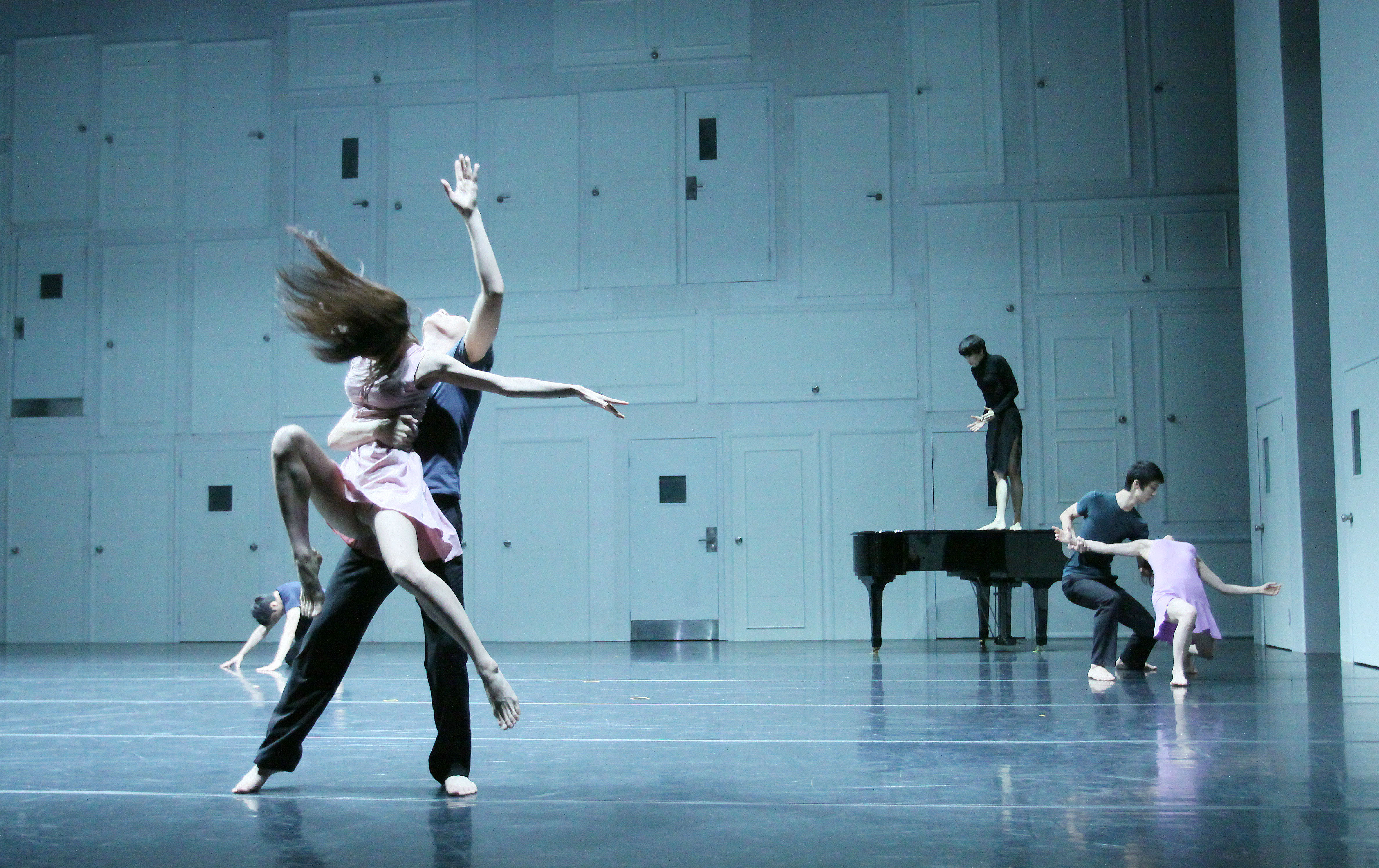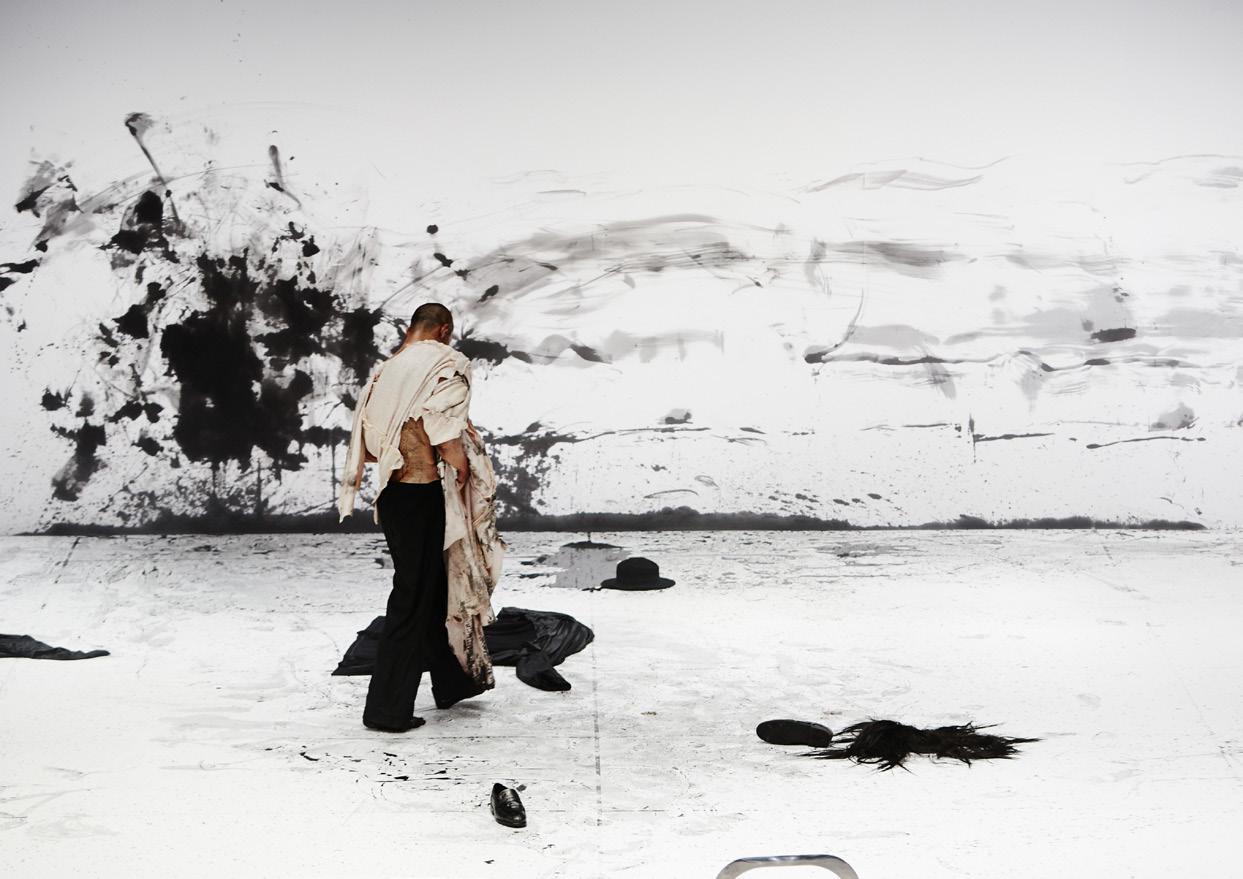Performance Info
Performance Info
About CompanyJeon Mi-sook received her B.A. and M.A. at Ewha Womans University and then continued her studies at the London Contemporary Dance School. She was a dancer and resident choreographer in TAM Dance Company until she founded the Jeon Misook Dance Company in 1988. Jeon spent her 20s observing the absurdities of society and her 30s on self-reflection. She blends these experiences with her observations of nature to create her dance works. In her 40s, she produced works characterized by mathematical and logical precision. And in her 50s, she sought to create works that anyone can relate to. Currently, she is a professor at the Korea National University of Arts School of Dance, a practicing choreographer, and a pivotal character in the Korean contemporary dance scene.
IntervieweeArtistic Director Jeon, Mi Sook
Interview
Q: You have been a modern dance choreographer since the 1980s. It’s not easy to summarize a career that spans four decades, but please tell us what kind of creative direction you pursued.
In my twenties, I had a strong sense of resistance so my works included my thoughts on the individual and his/her place in society, and the absurdities of society. I intentionally added unexpected situations and effects into the structure and storytelling of my works. In my early 30s I studied briefly in England and it was during this time of repose and self-reflection that I developed a broader perspective. Thanks to this period, I began to regard my creative projects the way I observed nature, and I began to wonder what kind of works would most reflect my identity. I discovered that I was very objective and rational, so in my 40s I attempted to create very logical and precise dance. When I reached my fifties, I was weary of constantly looking for the next new thing. I asked myself, “Can’t we just watch modern dance works in a relaxed manner?” “How can we make the spirit of modern art dwell in a work?” So I strove to create works that one could appreciate on their own, without any need for heavy analysis or concentration. In sum, my 20s were a time of challenge, my 30s were a time of rest and self-reflection, and my 40s were a time of logical methodology. I’d spent my 20s to 50s in a constant search for answers and change; in contrast, my 50s were a time of letting go.
Q: Unlike “Stay there” and “Are you happy to see me,” which were works created with logical precision and calculation, your work in the past 10 years have naturally progressed to more universal and sympathetic themes. “Amore amore mio,” which premiered in 2010, was the starting point of this change. Tell us about this work.As the title suggests, “Amore amore mio” is a story about love, not only between a man and a woman but many different forms of love. I started my professional dancing career in TAM Dance Company and I teach at the Korea National University of Arts. Both institutions are characterized by strong physical and technical prowess. Under this influence, my works also require strong physical technique. Starting from “Amore amore mio,” I began to exclude the typical dance forms and techniques and intentionally left some pages blank so that the audience could form their own interpretations of the work. I wanted to incite the audience into thinking on their own. The roughly 1,000 coffee cups that appear in the dance symbolize the different kinds of love. Like a coffee cup, love can make us feel warm inside, but it can also break. Modern dancers often feel burdened by their mission to popularize the genre, but I’d never thought it was necessary. However, “Amore amore mio” made me feel hopeful for the very first time that the general public could also comfortably appreciate my work.
Q: In 2012, your “Talk to Igor-On Motives of Stravinsky’s Les noces” questioned the meaning of marriage in modern society. Tell us about this work, which uses Stravinsky’s music.“Talk to Igor-On Motives of Stravinsky’s Les noces” is my conversation with Stravinsky on the topic of marriage. His unconventional and arcane music is a challenge for any modern choreographer, and I was curious how I’d interpret it. Stravinsky’s “Les noces” is a ballet and orchestral work that incorporates Russian wedding lyrics and folk customs. Most dance works, especially in ballet, depict royal weddings as mystical fairy-tale events. However, Stravinsky’s “Les noces” depicts the wedding of Russian farmers as a lament, a dark and heavy burden, and social obligation. I wondered how this work, first performed in 1923, would be received by modern audiences a hundred years later. Our concept of marriage as a rite of passage continues to change. I wanted to share with contemporary audiences how the significance of marriage has changed over the century and what it means to us today. I also wanted to challenge myself by attempting Stravinsky’s work.
Q: Jeon Misook Dance Company has many repertoire pieces that continue to make history. Your most recent work “Bow” has been performed all over the work. Why do you think “Bow” receives such high acclaim abroad?Although we always bow when greeting each other in Korea, I found beauty in this simple gesture and wondered how it appeared to Western eyes. My foreign colleagues often showed interest and wonder in our bowing etiquette. Bowing isn’t a big action, but it contains so much warmth. I also found it interesting how bowing can reflect the person’s inner mind but at the same be deceptive too. In “Bow,” I wanted to use the bowing gesture to show Korean culture and contemporary artistic sentiment. “Bow” was performed in Malaysia’s International Dance Festival Tari, London’s Laban Theatre, Germany’s Tanzmess, and Switzerland’s Dance Festival Steps. In 2020, “Bow” was invited to the Holland Dance Festival and toured in 9 Dutch cities. Because we couldn’t bring our stage sets abroad, we paid a lot of attention to the costumes and lighting. The lighting designer and I did extensive research to create exuberant lighting effects using saekdong multi-colored stripes that did more than enough to create a Korean ambience. We designed the costumes to reflect Korean culture and colors and e used fans in ways that hadn’t been used in dance before. The close relationship between dancer and fan aroused interest in the work. The bow gesture is very simple to Koreans, but I think it looked beautiful to foreign audiences. All these processes took place to create the beautiful form of “Bow.” And of course, choreographer Kim Jae-duk’s “Sinawi” music left a huge impression on international audiences.
Q: You’ve also consistently performed solo pieces. Tell us about your most memorable solo work.In 2001, I presented “Adieu, my love.” There came I time when I saw myself standing on stage and performing in a corps de ballet, and I thought, “I should stop dancing. Why is someone like me still standing here?” I created “Adieu, my love” after determining to leave the stage as a dancer. I use a large kyojasang [traditional folding table] as an objet in this work. To me, it symbolized a stage. However, many people saw it as a symbol for the domestic roles and burdens of women. This was not my intent at all. I had no consciousness of such a message, but works like this have given me and my creations the label “feminist.” “Adieu” made me realize that the artists’ unconsciousness may also convey messages that have been hidden or repressed.
Q: Critics have claimed that your dances are like sculpture or paintings. Does this accurately reflect your philosophy in choreography?I am very self-critical. I always think about what I can do to contribute to the development of dance and meet new audiences. I am also interested in the visual arts. When the social milieu changes, the thoughts and culture of artists change too. Art works are like my mentors. Modern dance is not easy to understand. I think having formal or visual cues on the stage can make it less difficult for audiences to appreciate the performance. Life isn’t easy, so I think of what I can do to bring comfort and joy to audiences. And if that means adding pictorial elements, so be it.
Q: What has driven you to consistently perform and create dance during the past 40 years?All I did was spend each day doing the tasks allotted to me within my dance orbit, and before I knew it, I was teaching young students and making choreography. If this was my responsibility and calling, I thought I should work hard and not fall into mannerisms. Because of my self-critical nature, I still feel uncertainty during the creative process and continue to search for myself, but I think this very diffidence empowers my work and gives me the strength to keep creating. I am still curious about contemporary art and want to explore new possibilities and see what I can do.
Production Details
Major Productions〈Amore amore mio〉
〈Bow〉
〈Talk to Igor~on Motives of Stravinsky’s Les noces〉
〈Adieu, my Love〉
〈The year of dog,~Born in 1958〉
〈Stay there〉
〈Are you happy to see me〉
- 2020 Holland Dance Festival, Netherland
- 2018 Milanoltre, Italy
- 2018 Dance Festival Steps, Switzerland
- 2011 Jacob’s Pillow Dance Festival, USA
- 2011 White Bird Festival, USA
- 2005 Festival Internacional Cervantino, Mexico
Production Details
- Director
Jeon, Mi Sook
Jeon Misook began her career as a choreographer and dancer for the TAM Dance Company in 1981. She currently leads her eponymous dance company, founded in 1998, and plays a central role in the Korean contemporary dance. Known for her meticulous compositions and insight, and a sensitivity and boldness that challenge the boundaries of dance, Jeon has for the past three decades played a formative role in defining dance in this era.
In 2002, Jeon was invited to the western United States and Europe to present “What’s going on?”, which highlights her unique interpretation of music and the impressive body manipulation techniques of dancers. In 2005, she participated in a joint production with Mexico’s Alsurdanza, the contemporary dance company of the State of Yucatán, the Festival Internacional Cervantino, and the Seoul International Dance Festival. Jeon received the Presidential Award at the Korea Dance Awards (2015) and the Best Dance Award at the Changmu Art Center Dance Art Awards (2016) for “Amore Amore Mio.” “Are You Happy to See Me?” was performed at the White Bird and Jacob’s Pillow Dance Festival in the United States, and “Bow” was selected as part of the main program at tanzmesse in Germany in 2016.









.jpeg)





 PREV
PREV
.jpeg)
.jpg)
_(c)포스(FORCE).jpg)
_(c)장석현_코끼리들이 웃는다(SUKHYUN JANG_ELEPHANTS LAUGH).jpg)
.jpg)
.jpg)
_(c)한받(Hahn Vad).jpg)
_(c)비주얼씨어터 꽃(CCOT)(1).jpg)
_(c)봉앤줄 (BONGnJOULE)(1).jpg)
_(c)대한민국연극제 2019 (Korea Theater Festival 2019)(0).jpg)
_(c)몸꼴(Momggol)(1).jpg)
2018MODAFE_Taemin Cho (2).jpg)











